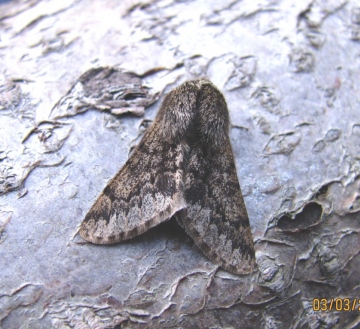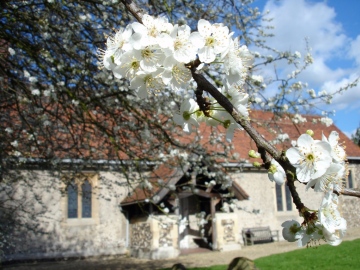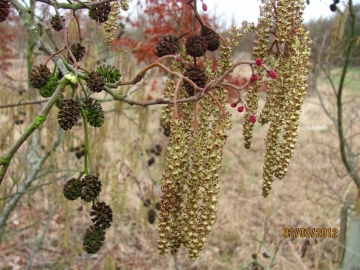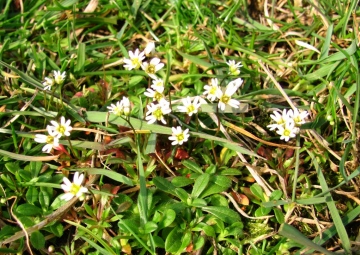Cherry Plum (seen here in Margaretting Churchyard) and Sallow bushes are now coming into flower and providing a steadily increasing source of pollen and nectar for insects emerging from hibernation. On March 1st the temperature at Blue House Farm, North Fambridge reached 17'C and I spent my lunch break sitting in the sunshine next to the reserve's solitary sallow bush. During the half hour I was there the catkins were visited by single Peacock, Small Tortiseshell and Comma, masses of Honey Bees, two Buff-tailed Bumblebees and a Drone Fly, the last named the parent of the so-called Rat-tailed Maggot, a small white grub with a retractable breathing tube, which enables it to dwell in up to a foot of gunge in unsavoury places, such as the outflow from sewage pipes, while still managing to breath fresh air. It must surely need some!
Other plants found in bloom this week have included the first Lesser Celandines, Alder (pictured here in the recently planted Bass Wood, Althorne) and Common Whitlow Grass (Blue House), the last named - despite its diminutive size - attracting a good number of Honey Bees and even the odd bumblebee.
When the temperature soars to a giddy 17'C at this time of year you tend to get ahead of yourself, looking around for Wheatears and Swallows when they are still a few weeks away. The garden moth trap often helps to keep the spring momentum going, though. Such was the case this week as not only did it produce new moths for the year - Hebrew Character, Small Wainscot, Lead-coloured Drab (an attractive species believe it or not, despite the name) and Small Brindled Beauty (pictured)  among them - but also Hawthorn, Birch and Green Shield Bugs, a queen Common Wasp, and a Great Diving Beetle. It's a good start, let's hope the weather doesn't let us down.
among them - but also Hawthorn, Birch and Green Shield Bugs, a queen Common Wasp, and a Great Diving Beetle. It's a good start, let's hope the weather doesn't let us down.


























